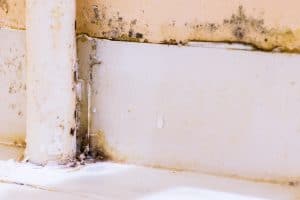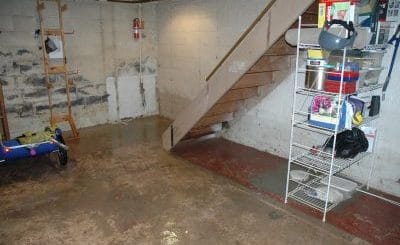When Is Mold Season?
MoldMold is a type of fungus that grows in damp or humid conditi... More forms when its airborne sporesSpores are microscopic reproductive units of fungi or mold t... More encounter moisture and food sources, such as wood, dirt, and paper. Moisture can be found in humidifiers, leaky roofs and pipes, floodingFlooding is the overflow or accumulation of water in areas t... More, and other types of water damage in the home. MoldMold is a type of fungus that grows in damp or humid conditi... More growth is ugly, has an unpleasant odorAn odor is a smell, often detectable by the human nose, whic... More, and causes damage to the structural core of the building. It also increases the risk of allergic reactions and infections in the residents of the home. Young children, the elderly, and those with weak immune systems are the most at risk for health problems.
MoldMold is a type of fungus that grows in damp or humid conditi... More is a common occurrence, but more so during a certain time of year. Homeowners should be more aware of “moldMold is a type of fungus that grows in damp or humid conditi... More season” and the repercussions it has on both the building and their health.
Mold Season
MoldMold is a type of fungus that grows in damp or humid conditi... More season refers to the time of year when moldMold is a type of fungus that grows in damp or humid conditi... More is most likely to grow due to factors like location and climate. MoldMold is a type of fungus that grows in damp or humid conditi... More can grow any time, but there are certain months out of the year that moldMold is a type of fungus that grows in damp or humid conditi... More growth is most common. MoldMold is a type of fungus that grows in damp or humid conditi... More growth is most prevalent from early spring to mid-fall, but its peak is during late summer. Be sure to check for excess moisture on your property during weather and climate changes, such as snow thaw, rain, and humidityHumidity is the amount of moisture or water vapor present in... More.

MoldMold is a type of fungus that grows in damp or humid conditi... More often grows on walls exposed to moisture.
Winter is the season when moldMold is a type of fungus that grows in damp or humid conditi... More is dormant, but that doesn’t mean the threat is completely gone. MoldMold is a type of fungus that grows in damp or humid conditi... More doesn’t die out during winter – it “hibernates,” especially in areas with extremely low temperatures. Areas with mild winters may experience moldMold is a type of fungus that grows in damp or humid conditi... More growth all year long. After the moldMold is a type of fungus that grows in damp or humid conditi... More has been dormant for the winter, it can find hosts in damp places or dead plants. To prevent this, have all mold removed and bleach the locations it spread to.
MoldMold is a type of fungus that grows in damp or humid conditi... More is a problem any time of year, but moldMold is a type of fungus that grows in damp or humid conditi... More season is when moldMold is a type of fungus that grows in damp or humid conditi... More growth is at its peak. Be alert during early spring to midfall and learn about moldMold is a type of fungus that grows in damp or humid conditi... More damage during each season.
Early Spring
Spring is the season where dormant mold begins to grow again after the wintertime. Spring is the worst season for moldMold is a type of fungus that grows in damp or humid conditi... More in areas that experience heavy rain because “spring showers” create lots of moisture for moldMold is a type of fungus that grows in damp or humid conditi... More to invade. Check the following places for standing water or excessive moisture in your home: the attic, basement, crawlspace, windows, and doors. Pay attention to unusual odors and crumbling drywall in your search. These could be symptoms of hidden water damage or moldMold is a type of fungus that grows in damp or humid conditi... More issues.
Summer
Summer is the worst season for moldMold is a type of fungus that grows in damp or humid conditi... More in areas that experience high humidityHumidity is the amount of moisture or water vapor present in... More. Typically, midwestern and southeastern regions are the most humid and homeowners should be aware of the high possibility of moldMold is a type of fungus that grows in damp or humid conditi... More growth. Kitchens and bathrooms are prone to spikes in humidityHumidity is the amount of moisture or water vapor present in... More due to the consistent use of appliances with hot water, so these rooms have the highest risk for moldMold is a type of fungus that grows in damp or humid conditi... More growth.
Air conditioning units reduce humidityHumidity is the amount of moisture or water vapor present in... More inside the home and typically, the extracted water is sent to a nearby drain. However, poor ventilationVentilation is the process of exchanging or circulating air ... More systems or units may cause this water to leak into crawl spaces or basements. It is important to check these places for moisture and remove it to prevent moldMold is a type of fungus that grows in damp or humid conditi... More growth. Condensation often grows on windows and doors when it is cool inside and humid outside, so check and clean these areas often.
Mid-Fall
Fall is the time of year when moldMold is a type of fungus that grows in damp or humid conditi... More slows down and begins to “hibernate” during the winter. Fall is the easiest part of moldMold is a type of fungus that grows in damp or humid conditi... More season because the moldMold is a type of fungus that grows in damp or humid conditi... More becomes dormant due to cold weather and homeowners don’t have to worry about rain or humidityHumidity is the amount of moisture or water vapor present in... More causing moldMold is a type of fungus that grows in damp or humid conditi... More growth. However, continue to check your home for moldMold is a type of fungus that grows in damp or humid conditi... More in mid-fall to remove the dormant moldMold is a type of fungus that grows in damp or humid conditi... More before wintertime.
Mold Allergy Season
Early spring to mid-fall is also the time of year when allergies are most severe. MoldMold is a type of fungus that grows in damp or humid conditi... More season can trigger allergic reactions and each season affects those allergies differently.

MoldMold is a type of fungus that grows in damp or humid conditi... More can trigger severe allergic reactions.
Spring is when moldMold is a type of fungus that grows in damp or humid conditi... More continues to grow after winter and an active moldMold is a type of fungus that grows in damp or humid conditi... More infestation can cause early allergy symptoms in spring. A seasonal increase in rain and wind can also increase airborne moldMold is a type of fungus that grows in damp or humid conditi... More sporesSpores are microscopic reproductive units of fungi or mold t... More. MoldMold is a type of fungus that grows in damp or humid conditi... More and dust both cause nasal congestion, watery eyes, and frequent sneezing.
Summer is when the moldMold is a type of fungus that grows in damp or humid conditi... More spore count is particularly high because of humidityHumidity is the amount of moisture or water vapor present in... More. You are advised to stay inside to avoid moldMold is a type of fungus that grows in damp or humid conditi... More grown on grass and grains, but moldMold is a type of fungus that grows in damp or humid conditi... More sporesSpores are microscopic reproductive units of fungi or mold t... More will continue to bother your allergies if moldMold is a type of fungus that grows in damp or humid conditi... More is present in the home.
Fall is like spring in terms of allergic reactions caused by moldMold is a type of fungus that grows in damp or humid conditi... More. As the weather transitions to fall and becomes windier, moldMold is a type of fungus that grows in damp or humid conditi... More sporesSpores are microscopic reproductive units of fungi or mold t... More increase. Season fall allergies often worsen due to frequent exposure to moldMold is a type of fungus that grows in damp or humid conditi... More of fungiFungi are a group of organisms, including mold, mildew, and ... More.
Contact Us
If you discover moldMold is a type of fungus that grows in damp or humid conditi... More on your property at any time of the year, don’t hesitate to call a mold remediation company. Our technicians are trained to remove moldMold is a type of fungus that grows in damp or humid conditi... More from your property and restore items and structures affected by moldMold is a type of fungus that grows in damp or humid conditi... More. It is best to let mold remediation professionals remove moldMold is a type of fungus that grows in damp or humid conditi... More for you rather than attempt to do so yourself, especially if you have mold-affected allergies.












